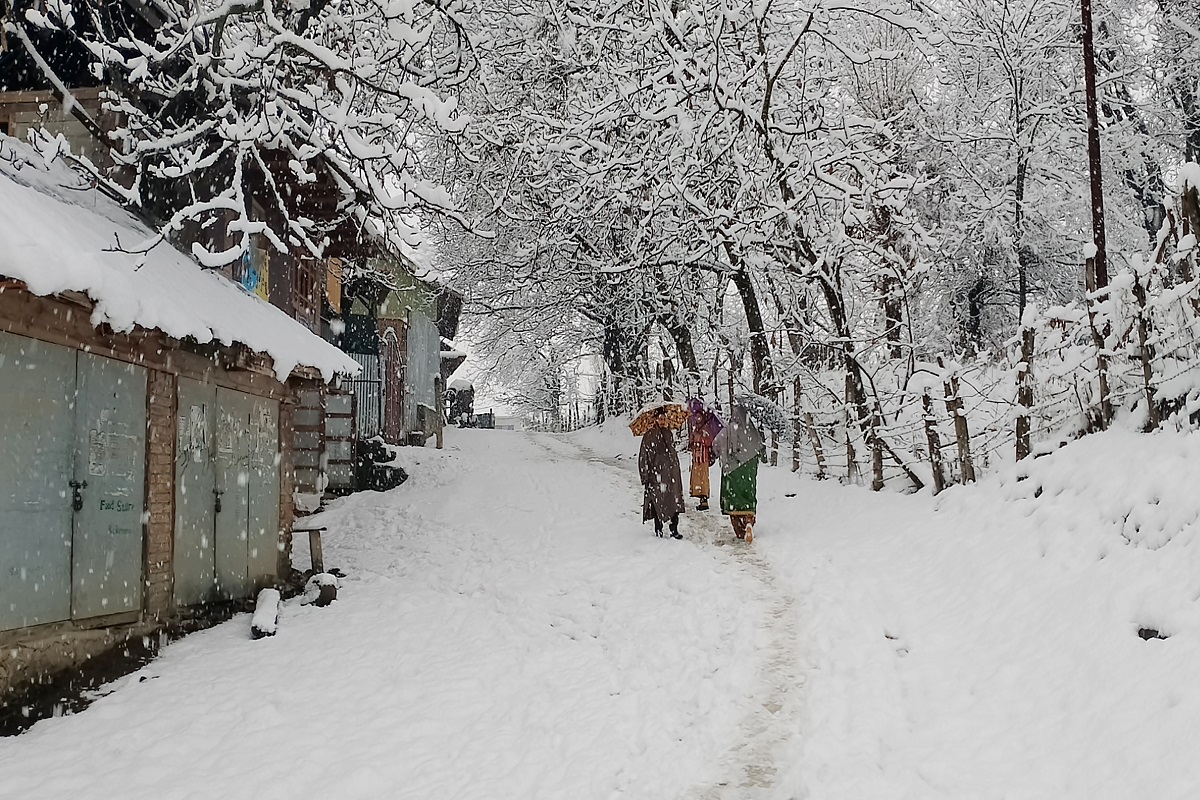Herath Poshte!: PM Modi greets Kashmiri Pandits on Maha Shivratri eve
Prime Minister Narendra Modi on Tuesday greeted Kashmiri Pandits "Herath Poshte!" on the eve of Maha Shivratri.
Most of these families live in villages where they own land and the family heads had decided not to get sucked into the tide of migration

Photo: SNS
Despite the mass exodus of the local Hindus in the early 1990s, around 350 families still continue to live in the Valley.
Most of these families live in villages where they own land and the family heads had decided not to get sucked into the tide of migration. One prominent family that belonged to Srinagar and decided to remain in the Valley are the Mattoos living in the Gogjibagh locality of Srinagar.
Advertisement
R.K. Mattoo retired as the conservator of forests. He belongs to a family of educated, influential, feudal landlords whose lands were spread across different districts of the Valley.
Advertisement
His wife Neerja Mattoo, taught English at the Government Womens College on Maulana Azad road in Srinagar city.
Neerja’s son, Amitabh Mattoo is a renowned academician and an expert on global strategic affairs. Amitabh qualified for the IPS in 1987 and for the IAS in 1988. He, however, preferred an academic career and is today a professor at JNU.
Neerja of course is the soul and spirit of the family. Despite persuasion to leave the Valley when the majority of her community was on the run, she preferred to remain in Kashmir and continued teaching students at the college.
The Mattoos have houses in Jammu and Delhi as well. Despite this, Neerja does not prefer to leave Kashmir. She does not, in her own words, “Just love Kashmir, I live Kashmir”.
She is highly respected in the local society and it is perhaps because of her universal acceptance that the family continued to live in Srinagar during the tumultuous 1990s without any official protection.
She would walk down to her college in the morning and walk back home in the evening.
“Not that I did not feel threatened, but my commitment to students outweighed other considerations. With Shiva’s blessings, we have lived unharmed”, she often tells those who wonder at her ‘stubborness’ to ignore what was happening around her.
Other Kashmiri Pandits who continue to live in the Valley during the last 32 years have done so with the support of their Muslim neighbours.
Be it the Pandits living in the south Kashmir districts or those living in the central districts of Srinagar, Budgam and Ganderbal, the support of their Muslim neighbours has been invaluable.
Continuing in the overwhelmingly Muslim majority Valley has, however, brought in changes in their lifestyle.
While going out to places where they are not known, the Pandit women do not dress like they did during the past.
The women of the Pandit families, who continue to live in the Valley, make themselves indistinguishable from the Muslim women. They do not wear the saree and do not display the ‘Tilak’ on their forehead.
“In our village we dress typically as we did before the exodus, but when travelling to places were we are not personally known, it is always advisable to make ourselves as indistinguishable as possible”, said a Pandit lady living in central Kashmir.
Despite their existence in Kashmir, the few members of the Pandit community left here are faced with a cultural shock.
“It is impossible to seek a match for your daughter from outside the Valley unless you agree on her moving out after marriage”, said the father of two daughters of marriageable age in another district of the Valley.
The government has chosen not to give any relief to those Pandits who continue to live in the Valley except a few security guards at places were militants are still active.
“We don’t have any reservations in government jobs as are reserved under the Prime Minister’s package for the migrant members of our community.
“It is an irony that despite having chosen to brave all odds to exist here, we are a neglected lot”, said a postgraduate Pandit woman who is jobless.
The cost to these minuscule members of the Pandit community is huge. They are left in a devil and deep sea situation.
Their relatives living outside the Valley see them as betrayers while they continue to live in uncertainty and deprivation in their ancestral places.
The only hope these members of the fast vanishing community have is that one day their relatives and other members of the community would return home.
Are they reasonably optimistic or are they chasing a mirage? At least, as of now, there is no definite answer to this riddle.
Advertisement